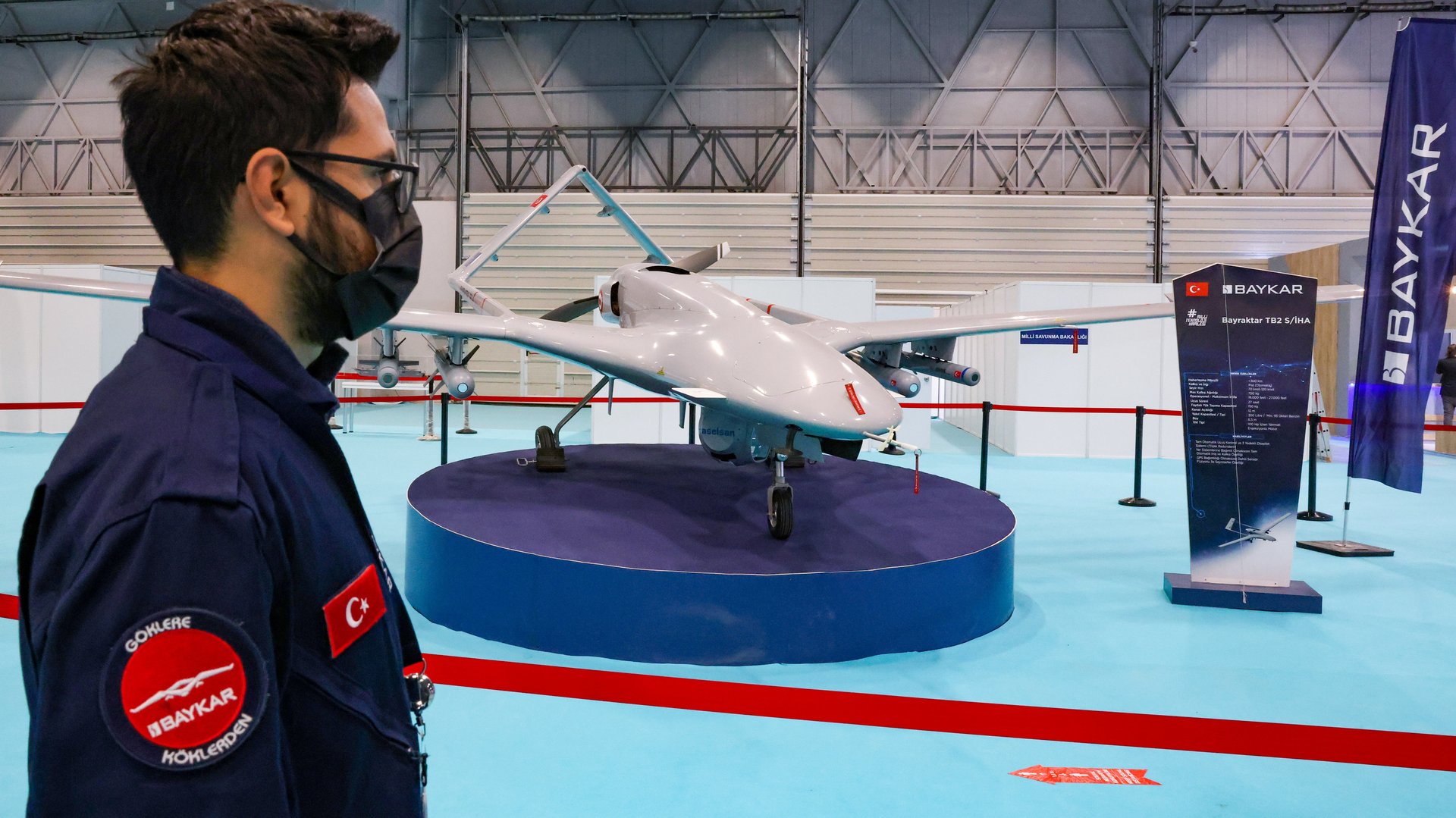A cheap drone is giving Ukraine’s military an edge against Russia
Ukraine’s fierce resistance against Russia’s invasion has surprised many observers, but that’s in part because one weapon in their fight—a low-cost, missile-toting flying robot—is fulfilling predictions made by military futurists.


Ukraine’s fierce resistance against Russia’s invasion has surprised many observers, but that’s in part because one weapon in their fight—a low-cost, missile-toting flying robot—is fulfilling predictions made by military futurists.
Russia has seen shocking losses of tanks and other armored vehicles. While the true extent is hard to know, attempts by open-source intelligence analysts to document losses verified by photographic evidence suggest hundreds of vehicles have been lost. Some 33 of those vehicles—including two trains carrying fuel to Russian forces—have been destroyed by a cheap Turkish drone called the Bayraktar TB2. And that’s a conservative estimate.
What is the Bayraktar TB2?
The TB2 is an autonomous flying vehicle capable of launching missiles, developed in Turkey over the last decade after the US declined to sell the country American-made drones like the Reaper. Each one is estimated to cost between $1 million and $2 million.
It has been seen in action in conflicts near Turkey, Libya, and Syria, but came to more prominent attention during the 2020 Nagorno-Karabakh war, when Azerbaijan and Armenia faced off in the disputed territory. Azerbaijan was able to emerge victorious thanks to its use of TB2s to destroy comparatively advanced Armenian tanks and artillery.
“What’s clear in that conflict is that a less funded nation can do combined arms warfare,” US Army Colonel Scott Shaw told Foreign Policy last year, using the term of art for tactics that employ aerial capabilities alongside infantry and armor. “You don’t need something like the United States Air Force, a superbly trained, spectacular capability, in order to conduct potentially a local air-to-ground or air-to-air activity.”
That forecast has been playing out in Ukraine, where many military experts expected Russia’s more advanced military to quickly occupy the country. The TB2 has helped Ukraine capitalize on logistical problems that are leaving some Russian convoys stranded. Though the drones are comparatively vulnerable to attacks by fighter jets, helicopters, and surface-to-air missiles, thus far they have been able to operate thanks to the surprising failure of Russia to dominate the skies over Ukraine.
What the TB2 means for the future of the Ukraine-Russia conflict
Military experts still expect that Russia will ultimately seize Ukraine’s key cities, likely through the brutal tactics of attacking civilian areas that have characterized Putin’s past military actions. If Ukraine’s resistance turns into an insurgency, drones could still play part. US strategists have fretted about cheap Chinese drones being used against US forces enmeshed in foreign conflicts, and Israel even assassinated a Palestinian electrical engineer thought to be developing drones for Hamas.
This is just the beginning of how low-cost technology can change the course of war for countries like the US and Russia that rely on expensive armed ground forces. The weapon is even part of Ukraine’s information warfare strategy, as seen in this propaganda video released by its armed forces:
This morning, Ukraine’s Defense Ministry reported receiving a new batch of drones from Turkey. “Fear the orcs!” its Twitter account boasted. “You don’t see him, but he is!”